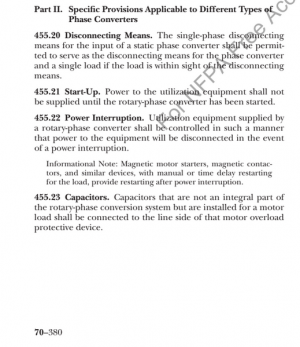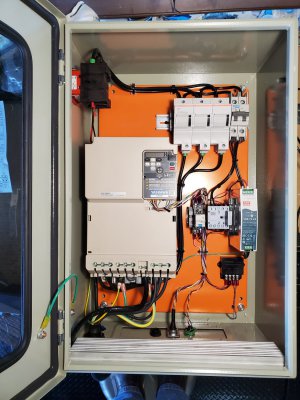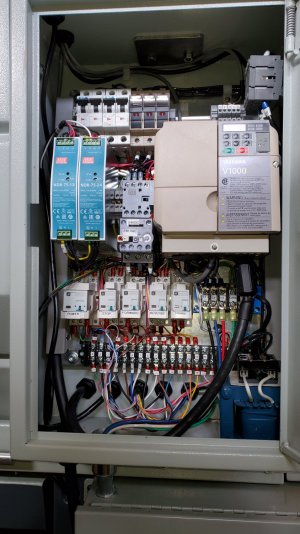@tq60 Thanks.
All the 3ph plugs/receptacles to the machines are L15-30, 4 conductors X, Y, Z, and ground, rated for 30 amps.
To be a little more clear.
200a at the house distribution center.
100a distribution center in the shop, "professionally" installed and signed off by the State of Washington.
As noted, circuit protection is per the National Electrical Code (NEC), or NFPA 70
The Static and Rotary phase converters manuals also provide recommended conductor size.
NFPA section 430.32 covers motor overload protection. You can access the NFPA on-line pdf version for free.
In "general" the KISS requirement is 250% max data plate amperage. See a 5hp 3ph 14amp below.
Section 455 covers phase converters.
455.20 is covered for a single motor by using the appropriate sized plugs on the 3ph side. A single motor is all I run at once.
455.23 I have covered, the balance capacitors are before the receptacle for the motor plug.

General motor data and recommended motor overload protection can be found here:
Here is an example for the 3ph, 4.6hp, 14amp motor used on the 10EE rounded up to 5hp.
- Motor FLA - 15.2
- Wire Size (AWG/kcmil) - 14
- Thermal Breaker Size – Amps - 30
- Safety Switch size – Amps - 30
- NEMA contactor – SIZE - 1
- IEC contactor - AC3 Rating - 18
- Dual Element Time Delay Fuse – Amps - 25
- Heavy Duty Switch Type 1 Enclosure - H321N
My wire is way over size, I have 10AWG cable running to my machines.
Comments?




